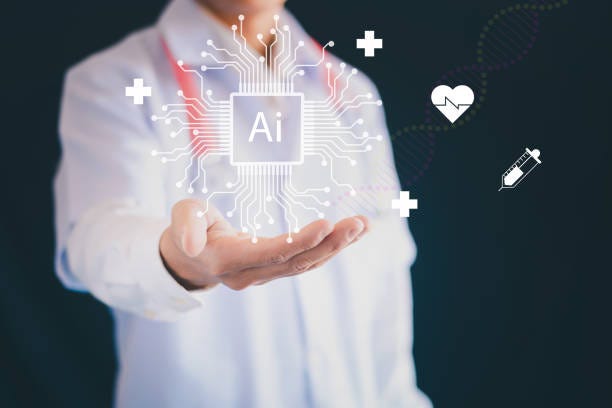The Spatial-Agentic Convergence: Redefining Healthcare, Rehabilitation, and Robotics through a Unified Framework
Recent innovations in three-dimensional environmental mapping, autonomous AI agents, intuitive human-machine interfaces and multi-modal sensors have each advanced along independent trajectories. Spatial computing has empowered precise volumetric visualisation, agentic AI has unlocked adaptive decision-making, immersive interfaces have redefined user engagement, and hybrid sensing has enriched contextual awareness. Today, these four strands are intertwining: high-fidelity 3D reconstructions are overlaid on real scenes; AI entities inhabit persistent virtual models of our planet; head-mounted displays foster collaborative annotation; and robots act with semantic understanding informed by fused sensor data.
This article articulates a four-layer framework that organises these capabilities into a synergistic continuum. It explores how each layer builds upon its predecessor to deliver rich, context-aware experiences and precise physical actuation. We examine the paradigm-shifting impacts in healthcare delivery, rehabilitation protocols, human-robot collaboration and ambient assisted living. We then chart future trajectories, from miniaturised wearables to brain–computer interface integration, and outline the key challenges—technical, ethical and regulatory—that must be addressed to ensure these technologies serve societal well-being and equity.
The Four-Layer Spatial-Agentic Framework
To synthesise the diverse innovations and their interplay, we propose a hierarchical model comprising four interdependent layers:
Perception Layer – Real-time three-dimensional mapping and situational awareness through multi-modal sensor fusion.
Interaction Layer – Ergonomic, immersive interfaces that translate perceptual data into intuitive, hands-free experiences.
Intelligence Layer – Agentic AI operating within a persistent, composable digital twin of the world.
Actuation Layer – Robotics and rehabilitation modules that translate cognitive insights into precise physical actions.
Each layer both relies on and enriches the others, forming a rich tapestry of context-sensitive capabilities. The remainder of this section examines each layer in detail.
Perception Layer: Three-Dimensional Environmental Mapping
At the foundation of the spatial-agentic ecosystem lies the ability to construct and maintain accurate, semantically rich models of the physical world:
Volumetric Overlays
High-resolution 3D reconstructions derived from modalities such as computed tomography and magnetic resonance imaging can be co-registered with sub-millimetre precision onto a live surgical scene. Overlaying internal anatomical structures—vessels, tumours and nerves—directly onto the operative field provides surgeons with an intuitive spatial reference, reducing the cognitive burden associated with mental registration of cross-sectional images.Hybrid Sensor Fusion
Combining LiDAR, stereo cameras, infrared depth sensors and inertial measurement units through edge-computing pipelines produces dynamic, centimetre-accurate maps of indoor and outdoor environments. Advanced classification algorithms distinguish human occupants, pets and equipment with over 99 per cent accuracy, ensuring reliable situational awareness even in cluttered or changing scenes.Virtual Positioning Systems (VPS)
Conventional global positioning systems falter indoors; VPS technologies supplement GPS by leveraging visual markers, beacon networks and simultaneous localisation and mapping (SLAM) refinements. This enables centimetre-level positional stability in hospitals, factories and smart homes, anchoring digital overlays and mobile agents to real-world coordinates without drift.
Together, these capabilities yield a continuously updated, semantically annotated 3D model that forms the sensory bedrock for all subsequent interactions and cognitive processes.
Interaction Layer: Immersive, Ergonomic Interfaces
Building on the perceptual substrate, the Interaction Layer renders complex spatial data into intuitive experiences tailored to diverse users—surgeons, therapists, engineers and patients alike:
Spatial Head-Mounted Displays
Modern AR/VR headsets project virtual monitors of effectively unlimited size, anchored to physical surfaces without spatial constraints. Surgeons may view patient vitals and imaging alongside the operative field, while therapists overlay exercise instructions onto the patient’s environment. Users report up to 40 per cent reductions in musculoskeletal strain compared to traditional screens, as head-tracked content eliminates awkward neck and eye movements.Hands-Free Workflows
Gesture recognition, voice commands and virtual keyboards combine to create a seamless, sterile interface for operating theatres. Engineers working on robotic prototypes manipulate design schematics and sensor data within the spatial workspace, accelerating evaluation cycles by eliminating context switches between physical and digital tools.Collaborative Annotation and Telepresence
Low-latency (< 100 ms) streaming of a user’s spatial perspective to remote experts fosters real-time guidance. Specialists annotate directly onto the 3D scene—circling a critical vessel or highlighting a misaligned prosthetic component—democratising access to expertise and shortening learning curves for complex procedures.
The Interaction Layer thus transforms raw spatial data into ergonomic, accessible workflows, reducing cognitive load, preserving focus and enabling distributed collaboration.
Intelligence Layer: Agentic AI and the Persistent Digital Twin
Situated above the interfaces, the Intelligence Layer injects cognitive depth by embedding autonomous AI entities within a dynamically synchronised digital replica of Earth:
Persistent Digital Twin
A live, explorable 3D globe integrates geospatial maps, building schematics, epidemiological statistics and real-time sensor feeds. This unified substrate supports global health monitoring, logistics planning and scenario simulations, offering a common reference frame for all agents and users.Composable Domain Layers
Users tailor their view by toggling specialised information overlays: sterile zone protocols in operating suites, rehabilitation performance metrics in fitness studios, or supply-chain bottlenecks in manufacturing plants. Composability ensures that only relevant data surfaces, while preserving the integrity of the underlying reference model.Evolving AI Agents
Digital companions learn individual preferences, institutional workflows and procedural nuances over time. In surgical settings, agents may proactively recommend instrument selections based on prior outcomes; in rehabilitation, they personalise exercise regimens by analysing continuous kinematic data. Feedback loops enable these agents to refine their models, transitioning from reactive assistants to anticipatory collaborators.
By orchestrating complex, multi-party processes and offering contextually relevant guidance, the Intelligence Layer converts spatial awareness into actionable insight.
Actuation Layer: Robotics and Rehabilitation Modules
At the apex of the framework, the Actuation Layer realises the spatial-agentic vision through precise physical interventions:
Surgical Robotics
Robots equipped with centimetre-accurate spatial maps and semantic context recognition distinguish tissue types and instrument positions. Under surgeon supervision or semi-autonomous control, they execute fine movements—suturing microvasculature or ablating tumours—with consistency surpassing manual dexterity.Collaborative Robots (Cobots)
In mixed human–robot workspaces, operators receive virtual guides—such as docking paths and assembly sequences—overlaid on the shared environment. Cobots anticipate human intent through gaze and gesture analysis, adjusting trajectories to avoid collisions and support fluid tool handovers without cumbersome reprogramming.Wearable Rehabilitation Devices
Exosuits, haptic gloves and sensor-embedded garments leverage spatial cues to adapt assistance levels in real time. By anticipating obstacles and adjusting support based on user performance, these devices accelerate motor relearning and yield up to 25 per cent faster gains on standard functional assessments compared to conventional therapy.
Collectively, the Actuation Layer closes the loop between perception, interaction and intelligence, translating digital context into tangible health and productivity benefits.
Transformative Impacts Across Key Domains
The confluence of these four layers engenders paradigm shifts that extend far beyond incremental improvements. We highlight the most profound transformations in four critical domains.
Healthcare Delivery: Precision, Access and Continuity
Sub-millimetre Surgical Accuracy
Volumetric overlays empower surgeons to visualise internal anatomy in situ, reducing intraoperative guesswork. Clinical trials report 15–20 per cent decreases in complications for complex neurosurgical and cardiac procedures, enabling minimally invasive approaches and shorter recovery times.
Democratisation of Expertise
Spatial teleproctoring dissolves geographical barriers. Remote specialists can guide local teams in real time, annotating the operative scene from thousands of miles away. This accelerates the transfer of high-skill procedures to under-resourced hospitals and expedites procedural training.
Continuous, Preventative Care
Persistent AI agents aggregate data from wearable sensors, smart home monitors and electronic health records within the patient’s spatial context. Detecting subtle gait abnormalities or environmental triggers, agents prompt early interventions—such as remote physiotherapy—shifting care from reactive to preventative and reducing readmission rates.
Rehabilitation: From Clinic-Centric to Context-Aware
Immersive Motor Relearning
Exercises become spatially anchored games—patients reach for holographic targets in their living rooms or navigate virtual obstacle courses in clinics. Real-time biofeedback from AI agents provides corrective cues (“Rotate elbow further”), motivating adherence and yielding greater functional improvements than traditional routines.
Ecologically Valid Cognitive Therapy
Cognitive rehabilitation tasks—memory recall, executive function challenges—are embedded into daily activities. For example, overlaid prompts guide patients through meal preparation or shopping simulations in their actual kitchens, promoting better retention and transfer to real-world contexts.
Remote Supervision and Adherence
Therapists monitor patients via spatial feeds, observing 3D movement quality and adjusting regimens instantly. AI coaching ensures compliance and adapts difficulty, enabling continuous, high-intensity intervention without the travel burdens of clinic visits.
Robotics: Contextual Collaboration and Rapid Innovation
Human–Robot Synergy (HRC 2.0)
Shared spatial awareness creates a unified operational picture. Cobots anticipate human intent—detecting gaze direction and hand gestures—to adjust paths and offer tools proactively. AI mediates high-level commands into precise actions (“Position endoscope for optimal liver exposure”).
Accelerated R&D via Digital Sandbox
Engineers simulate robotic designs and logistics within realistic digital twin environments. Virtual prototyping across diverse scenarios cuts development cycles by up to 30 per cent and de-risks deployments in challenging real-world conditions.
Semantic Autonomous Robots
Domestic care robots navigate homes with hybrid sensing and agentic guidance, delivering medications, monitoring vital signs and triggering alerts for falls or emergencies. Prosthetics and exoskeletons integrate spatial context to predict obstacles and adjust support, reducing cognitive load for users.
Ambient Assisted Living: Dignified, Proactive Support
Privacy-Centred Monitoring
Edge-processed sensor fusion recognises falls and anomalies with 99 per cent accuracy without continuous video. Abstracted alerts preserve resident dignity while ensuring fast responses to emergencies.
Agentic Companionship
Persistent AI companions learn daily routines and provide context-aware reminders—“Your morning pills are on the kitchen counter”—and facilitate engaging activities to combat isolation among older adults or cognitive-impaired individuals.
Integrated Home-Clinic Continuum
Spatially guided exercises prescribed by therapists are performed at home under remote monitoring. AI mediates progress tracking, automatically adjusting regimens and alerting clinicians to deviations, creating a seamless therapeutic lifecycle.
Future Trajectories
As spatial-agentic technologies mature, several trends will define their evolution:
Wearable Miniaturisation
Advances in optical waveguides (metalenses, holographic optics), solid-state batteries and ultra-low-power AI chips will shrink headsets towards the comfort of spectacles, enabling all-day use across professional and personal domains.Brain–Computer Interface Integration
Non-invasive and implantable BCIs will layer directly onto the spatial-agentic stack, permitting users—particularly those with severe motor impairments—to control digital agents and robots via thought, enriched by precise positional context.Real-Time Digital Twins
Persistent digital replicas of patients, facilities and workflows will update continuously, enabling predictive simulations of surgical outcomes, rehabilitation trajectories and logistical bottlenecks, thus informing proactive optimisation.Hyper-Personalised AI Agents
Agents will shift from reactive helpers to anticipatory managers, autonomously orchestrating medication schedules, supply replenishment and environmental settings based on deep longitudinal learning of individual habits and preferences.Open Interoperability Standards
Industry consortia will define universal protocols for spatial data exchange, agent communication and robotic control—akin to IoT standards like Matter—to prevent vendor lock-in and foster a vibrant, interoperable ecosystem.Convergence with Advanced Materials and Manufacturing
Spatial-agentic design environments will accelerate the development of novel materials—lightweight exoskeleton frames and adaptive smart textiles—and additive manufacturing pipelines capable of on-demand, personalised device production guided by spatial scans.
Challenges and Imperatives
Realising the vision of a seamless physical-digital continuum demands addressing critical technical, ethical and regulatory challenges:
Technical Hurdles
Robust Indoor VPS: Ensuring centimetre-level stability in dynamic indoor scenes remains an engineering challenge, requiring advances in SLAM algorithms and beacon technologies.
Battery and Compute Constraints: Wearables must balance form factor, battery life and on-device compute to support continuous, low-latency AI inference.
Scalable Multi-User Synchronisation: Complex environments with multiple simultaneous users and agents necessitate high-throughput, fault-tolerant synchronisation protocols.
Interoperability and Ecosystem Fragmentation
Proprietary platforms and divergent data formats risk siloed implementations. Concerted efforts to define open-source reference architectures and industry-wide standards are essential to prevent fragmentation and promote broad adoption.
Data Privacy, Security and Governance
The paradigm generates vast volumes of sensitive health, behavioural and locational data. Robust end-to-end encryption, granular consent management, edge-first processing and transparent governance policies are paramount to maintain user trust and comply with regulations such as GDPR, HIPAA and evolving AI Acts.
Ethical AI Design and Explainability
Agentic systems must operate under clear ethical guardrails, ensuring transparency, accountability and fairness. Explainable AI techniques are needed so that users can understand and contest agent recommendations, particularly in safety-critical healthcare settings.
Usability, Accessibility and Equity
Inclusive, human-centred design is critical to accommodate users across age groups, abilities and digital literacies. Proactive measures—tiered pricing, community-based deployment models and offline capabilities—must guard against digital exclusion.
Clinical Validation and Regulatory Pathways
Large-scale clinical trials and real-world evidence studies are essential to quantify efficacy, safety and cost-effectiveness. Regulatory frameworks (FDA, EMA, UK MDR) must adapt to evaluate adaptive, multi-component systems that combine hardware, software and AI agents.
Economic Viability and Reimbursement
High capital investments in hardware, integration and training require clear value propositions. Developing reimbursement models with insurers and health systems—demonstrating ROI through reduced complications, shorter hospital stays and improved patient independence—is vital for sustainable scaling.
The fusion of spatial computing, agentic AI, immersive interfaces and hybrid sensing into a unified four-layer framework marks the dawn of a new spatial-agentic era. By layering precise environmental perception, ergonomic human interfaces, autonomous cognitive orchestration and responsive actuation, this paradigm promises to revolutionise healthcare delivery, rehabilitation methodologies, human–robot collaboration and ambient assisted living.
Yet, the pathway to realising these benefits hinges on overcoming significant technical, interoperability, privacy and regulatory challenges. Only through coordinated, multidisciplinary efforts—spanning R&D, industry consortia, ethical governance and policy adaptation—can we ensure that these powerful technologies augment human dignity, equity and well-being. As the spatial-agentic continuum takes shape, our collective mandate is to steer its evolution towards an inclusive, beneficial future for all.
For further updates on these transformative trends, please connect with me on LinkedIn at https://www.linkedin.com/in/zenkoh/ and subscribe to my Substack newsletter at
Legal Disclaimer This article is intended for informational purposes only and does not constitute professional advice. The content is based on publicly available information and should not be used as a basis for investment, business, or strategic decisions. Readers are encouraged to conduct their own research and consult with professionals before making decisions. The author and publisher disclaim any liability for actions taken based on the content of this article.














